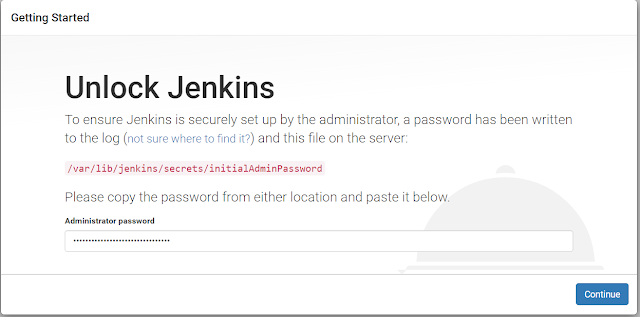PeopleSoft Tables (PeopleTools, HRMS, Benfits, Payroll)
PeopleTools Tables
Projects* PSPROJECTDEFN — Project header table
* PSPROJECTITEM — Definitions in the project
Fields
* PSDBFIELD — Fields in the system
* PSXLATITEM — Translate Values
Records
* PSRECDEFN — Record header table
* PSRECFIELD — Fields in the record (subrecords not expanded)
* PSRECFIELDALL — Fields in the record (subrecords expanded)
* PSKEYDEFN — Indexes
* PSTBLSPCCAT — Tablespaces
* PSRECTBLSPC — Records’ tablespace assignments
Pages
(Note: Pages still have the name panels in the PeopleTools table names)
* PSPNLDEFN — Page header table
* PSPNLFIELD — Page controls (field types/FIELDTYPE)
* PSPNLHTMLAREA — Static HTML Areas on Pages
Components
(Note: Components still have the name panel group in the PeopleTools table names)
* PSPNLGRPDEFN — Component header table
* PSPNLGROUP — Pages in the components
Component Interface
* PSBCDEFN — header record; one row for each component interface
* PSBCITEM — one row for each property
Menus
* PSMENUDEFN — Menu header table
* PSMENUITEM — Items (components) on the menu
Security
* PSCLASSDEFN — Permission List header table
* PSAUTHITEM — Menu items granted security by permission lists
* PSROLEDEFN — Role header table
* PSROLECLASS — Permission Lists in roles
* PSOPRDEFN — User ID header table
* PSROLEUSER — Roles granted to users
PeopleSoft Login Details and Authorization
PSACCESSLOG - Login and logout information of the users
PSACCESSPRFL - Contains the symbolic id,accessid/password details.
PSCLOCK - Login fails if the table is empty
PSOPRDEFN - This table holds the peoplesoft Oprid’s/passwords info with symbolic id.
PeopleSoft Audit Tables
PSAUDIT This table holds all the changes for panel/record modifications
Process Scheduler
* PS_PRCSDEFN — Process Definition Header
* PS_PRCSDEFNGRP — Process Group
* PS_PRCSDEFNPNL — Component
* PS_PRCSJOBDEFN — Job Header
* PSPRCSRQST — Process Request Instances
* PS_PRCSJOBITEM — Job Processes
Portal
* PSPRSMDEFN — Content References and Folders
* PSPRUHTABPGLT — Portal User HP Tab Pagelet
Change Control
* PSCHGCTLHIST — shows history of locked definitions with project name, incident, and description
* PSCHGCTLLOCK — shows definitions that are currently locked
Application Engine
* PSAEAPPLDEFN — header record; 1 row per app engine
* PSAEAPPLSTATE — state records assigned to app engines
* PSAEAPPLTEMPTBL — temp tables assigned to app engines
* PSAESECTDEFN — sections
* PSAESTEPDEFN — steps
* PSAESTEPMSGDEFN
* PSAESTMTDEFN — actions (action types)
List Log Messages
HTML Definitions
* PSCONTDEFN — header record; last update time, etc.
* PSCONTENT — stores actual text in the HTML definition
SQL Definitions
* PSSQLDEFN — header record; last update time, etc.
* PSSQLTEXTDEFN — stores actual text in the SQL definition
File Layout Definitions
* PSFLDDEFN — header record; last update time, etc.
* PSFLDSEGDEFN — stores the segments for each layout
* PSFLDFIELDDEFN — stores the fields for each layout
Workflow
* APPR_RULE_DETL - Approval Rule Defn Details
* APPR_RULE_FIELD - Approval Rule Defn Route Cntl
* APPR_RULE_AMT - Approval Rule Amounts
* RTE_CNTL_LN - Route Control Profile Line
* RTE_CNTL_RUSER - RoleUser Route Cntl Profiles
* RTE_CNTL_TYPE - Route Control Type
* RTE_CNTL_HDR - Routing Control Type
PeopleSoft HR Tables
PS_EMPLOYEESPS_EMPLOYEES_LNG
PS_EMPLOYMENT
PS_EMPLOYMENT_LNG
PS_EMPLOYMENT_LNG1
PS_EMPLOYMENT_LNG2
PS_EMPLOYMENT_LNG3
PS_HS_EMPLOYMENT
PS_HS_EMPL_REL_CAN
PS_HS_EMPL_REL_LNG
PS_HS_EMPL_SUB_CAN
PS_HS_EMPL_SUB_LNG
PS_INJ_CLMADDR_CAN
PS_JOB
PS_PERSONAL_DATA
PS_PERSONL_DTA_LNG
PS_PERS_DATA_AET
PS_PERS_DATA_EFFDT
PS_PERS_DTAEFF_LNG
PS_PERS_NID
PS_JOB_EARNS_DIST
PS_JOB_APPROVALS
PS_BEN_PROG_PARTIC
PeopleSoft Base Benefits Tables
PS_BAS_PARTIC
PS_BAS_PARTIC_COST
PS_BAS_PARTIC_DPND
PS_BAS_PARTIC_INVT
PS_BAS_PARTIC_OPTN
PS_BAS_PARTIC_PLAN
PS_BENEF_COMMENT
PS_BEN_PROG_PARTIC
PS_DEPENDENT_BENEF
PS_DISABILITY_BEN
PS_FSA_BENEFIT
PS_FSA_PAYMENT
PS_HEALTH_BENEFIT
PS_HEALTH_DEPENDNT
PS_LEAVE_ACCRUAL
PS_LEAVE_PLAN
PS_LIFE_ADD_BEN
PS_LIFE_ADD_BENEFC
PS_PENSION_BENEFC
PS_PENSION_PLAN
PS_RTRMNT_PLAN
PS_SAVINGS_BENEFIC
PS_SAVINGS_INVEST
PS_SAVINGS_PLAN
PS_VACATION_BEN
PS_STATE_TAX_DATA
PS_GENL_DEDUCTION
PS_BAL_ADJ_UI_CAN
PS_CAN_CHECK_YTDPS_CAN_DED_BALANCE
PS_CAN_ERN_BALANCE
PS_CAN_TAX_BALANCE
PS_CAN_TAX_DATA
PS_CHECK_YTDPS_DEDUCTION_BAL
PS_EARNINGS_BAL
PS_FED_TAX_DATA
PS_TAX_BALANCE
PS_LOCAL_TAX_DATAPS_BAL_ADJ_ARR
PS_BAL_ADJ_CHK
PS_BAL_ADJ_CN_CHK
PS_BAL_ADJ_CN_DED
PS_BAL_ADJ_CN_ERN PS_BAL_ADJ_CN_TAX
PS_BAL_ADJ_DED
PS_BAL_ADJ_ERN
PS_BAL_ADJ_GRN
PS_BAL_ADJ_TAXPS_DED_ARREARS
PS_GARN_RULE
PS_GARN_SCHED
PS_GARN_SPEC
PS_GENL_DED_CD
PS_BAS_PARTIC_COST
PS_BAS_PARTIC_DPND
PS_BAS_PARTIC_INVT
PS_BAS_PARTIC_OPTN
PS_BAS_PARTIC_PLAN
PS_BENEF_COMMENT
PS_BEN_PROG_PARTIC
PS_DEPENDENT_BENEF
PS_DISABILITY_BEN
PS_FSA_BENEFIT
PS_FSA_PAYMENT
PS_HEALTH_BENEFIT
PS_HEALTH_DEPENDNT
PS_LEAVE_ACCRUAL
PS_LEAVE_PLAN
PS_LIFE_ADD_BEN
PS_LIFE_ADD_BENEFC
PS_PENSION_BENEFC
PS_PENSION_PLAN
PS_RTRMNT_PLAN
PS_SAVINGS_BENEFIC
PS_SAVINGS_INVEST
PS_SAVINGS_PLAN
PS_VACATION_BEN
People Payroll Tables
PS_STATE_TAX_DATA
PS_GENL_DEDUCTION
PS_BAL_ADJ_UI_CAN
PS_CAN_CHECK_YTDPS_CAN_DED_BALANCE
PS_CAN_ERN_BALANCE
PS_CAN_TAX_BALANCE
PS_CAN_TAX_DATA
PS_CHECK_YTDPS_DEDUCTION_BAL
PS_EARNINGS_BAL
PS_FED_TAX_DATA
PS_TAX_BALANCE
PS_LOCAL_TAX_DATAPS_BAL_ADJ_ARR
PS_BAL_ADJ_CHK
PS_BAL_ADJ_CN_CHK
PS_BAL_ADJ_CN_DED
PS_BAL_ADJ_CN_ERN PS_BAL_ADJ_CN_TAX
PS_BAL_ADJ_DED
PS_BAL_ADJ_ERN
PS_BAL_ADJ_GRN
PS_BAL_ADJ_TAXPS_DED_ARREARS
PS_GARN_RULE
PS_GARN_SCHED
PS_GARN_SPEC
PS_GENL_DED_CD
Complete PeopleSoft Tables
PS_EMPLOYEESPS_EMPLOYEES_LNG
PS_EMPLOYMENT
PS_EMPLOYMENT_LNG
PS_EMPLOYMENT_LNG1
PS_EMPLOYMENT_LNG2
PS_EMPLOYMENT_LNG3
PS_HS_EMPLOYMENT
PS_HS_EMPL_REL_CAN
PS_HS_EMPL_REL_LNG
PS_HS_EMPL_SUB_CAN
PS_HS_EMPL_SUB_LNG
PS_INJ_CLMADDR_CAN
PS_JOB, PS_PERSONAL_DATA
PS_PERSONL_DTA_LNG
PS_PERS_DATA_AET
PS_PERS_DATA_EFFDT
PS_PERS_DTAEFF_LNG
PS_PERS_NID
PS_JOB_EARNS_DIST
PS_JOB_APPROVALS
PS_STATE_TAX_DATA
PS_GENL_DEDUCTION
PS_BAL_ADJ_UI_CAN
PS_CAN_CHECK_YTD
PS_CAN_DED_BALANCE
PS_CAN_ERN_BALANCE
PS_CAN_TAX_BALANCE
PS_CAN_TAX_DATA
PS_CHECK_YTD
PS_DEDUCTION_BAL
PS_EARNINGS_BAL
PS_FED_TAX_DATA
PS_TAX_BALANCE
PS_LOCAL_TAX_DATA
PS_BAL_ADJ_ARR
PS_BAL_ADJ_CHK
PS_BAL_ADJ_CN_CHK
PS_BAL_ADJ_CN_DED
PS_BAL_ADJ_CN_ERN
PS_BAL_ADJ_CN_TAX
PS_BAL_ADJ_DED
PS_BAL_ADJ_ERN
PS_BAL_ADJ_GRN
PS_BAL_ADJ_TAX
PS_DED_ARREARS
PS_GARN_RULE
PS_GARN_SCHED
PS_GARN_SPEC
PS_GENL_DED_CD
PS_BAS_PARTIC
PS_BAS_PARTIC_COST
PS_BAS_PARTIC_DPND
PS_BAS_PARTIC_INVT
PS_BAS_PARTIC_OPTN
PS_BAS_PARTIC_PLAN
PS_BENEF_COMMENT
PS_BEN_PROG_PARTIC
PS_DEPENDENT_BENEF
PS_DISABILITY_BEN
PS_FSA_BENEFIT
PS_FSA_PAYMENT
PS_HEALTH_BENEFIT
PS_HEALTH_DEPENDNT
PS_LEAVE_ACCRUAL
PS_LEAVE_PLAN
PS_LIFE_ADD_BEN
PS_LIFE_ADD_BENEFC
PS_PENSION_BENEFC
PS_PENSION_PLAN
PS_RTRMNT_PLAN
PS_SAVINGS_BENEFIC
PS_SAVINGS_INVEST
PS_SAVINGS_PLAN
PS_VACATION_BEN


